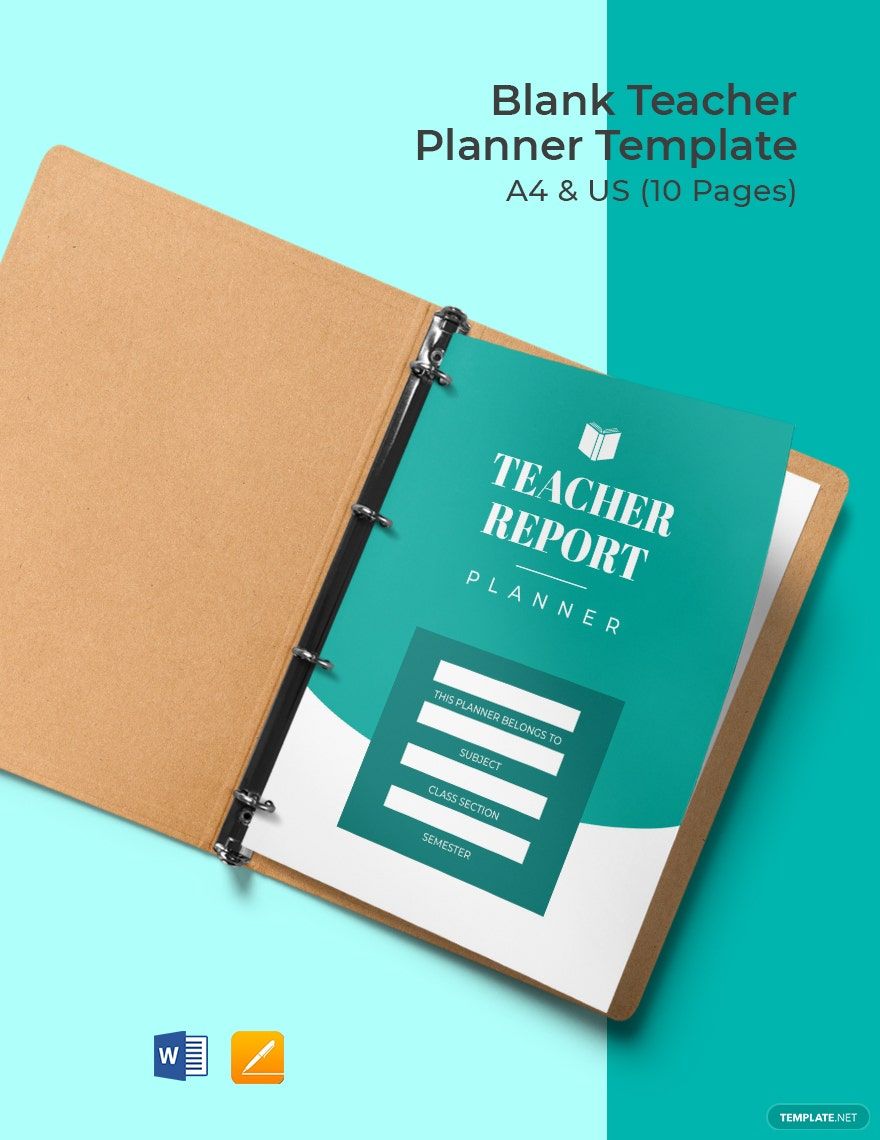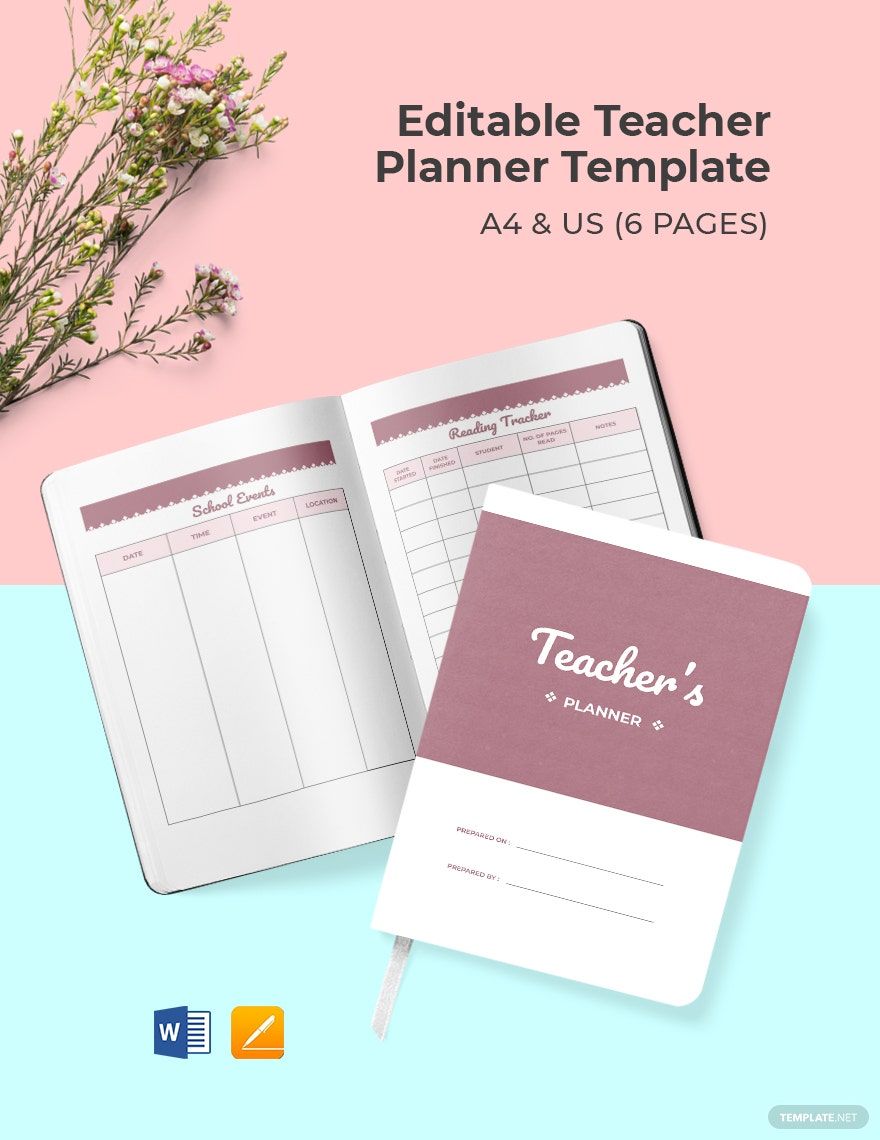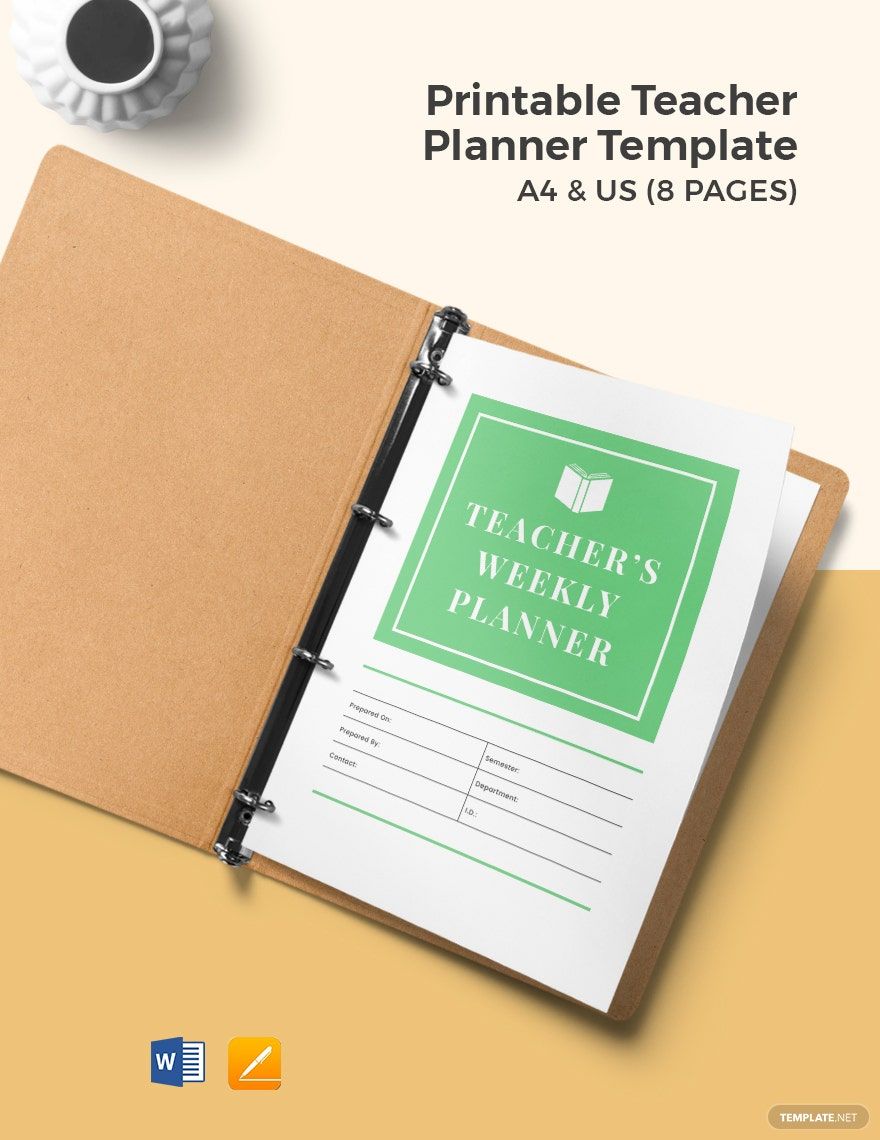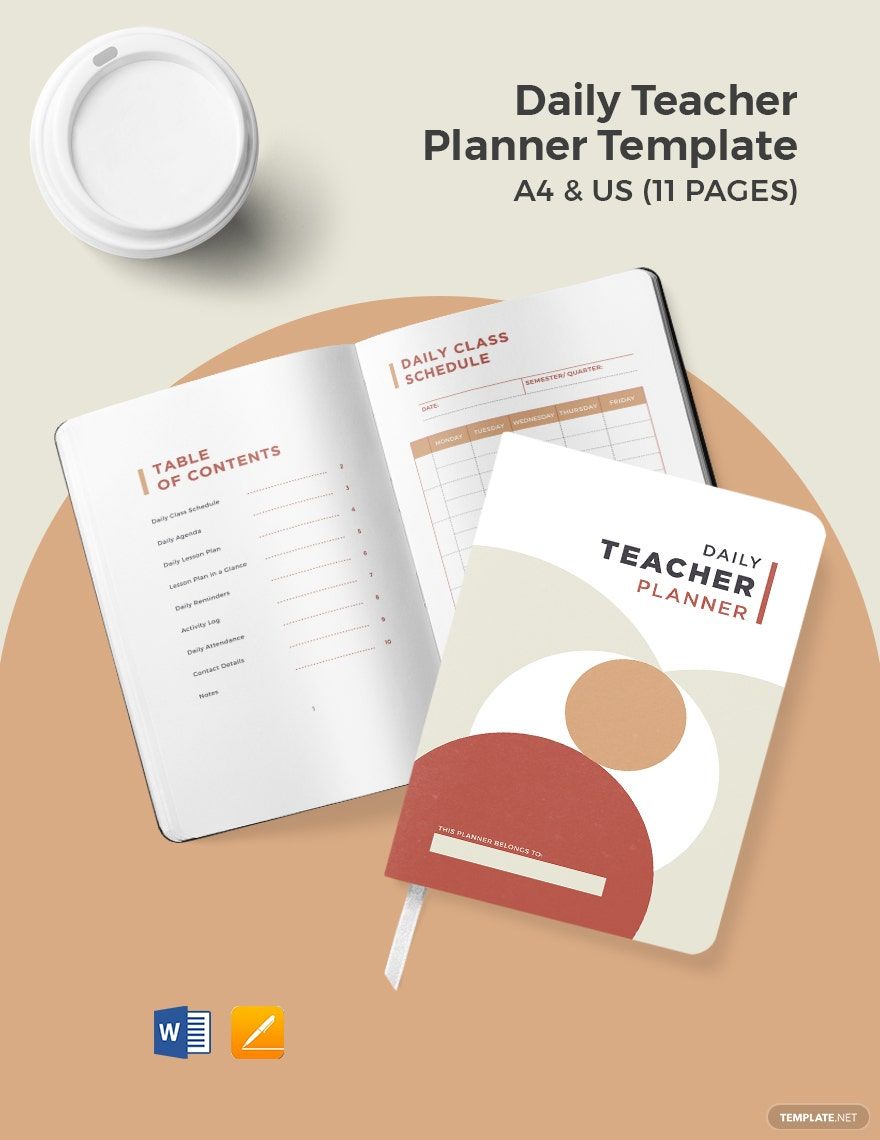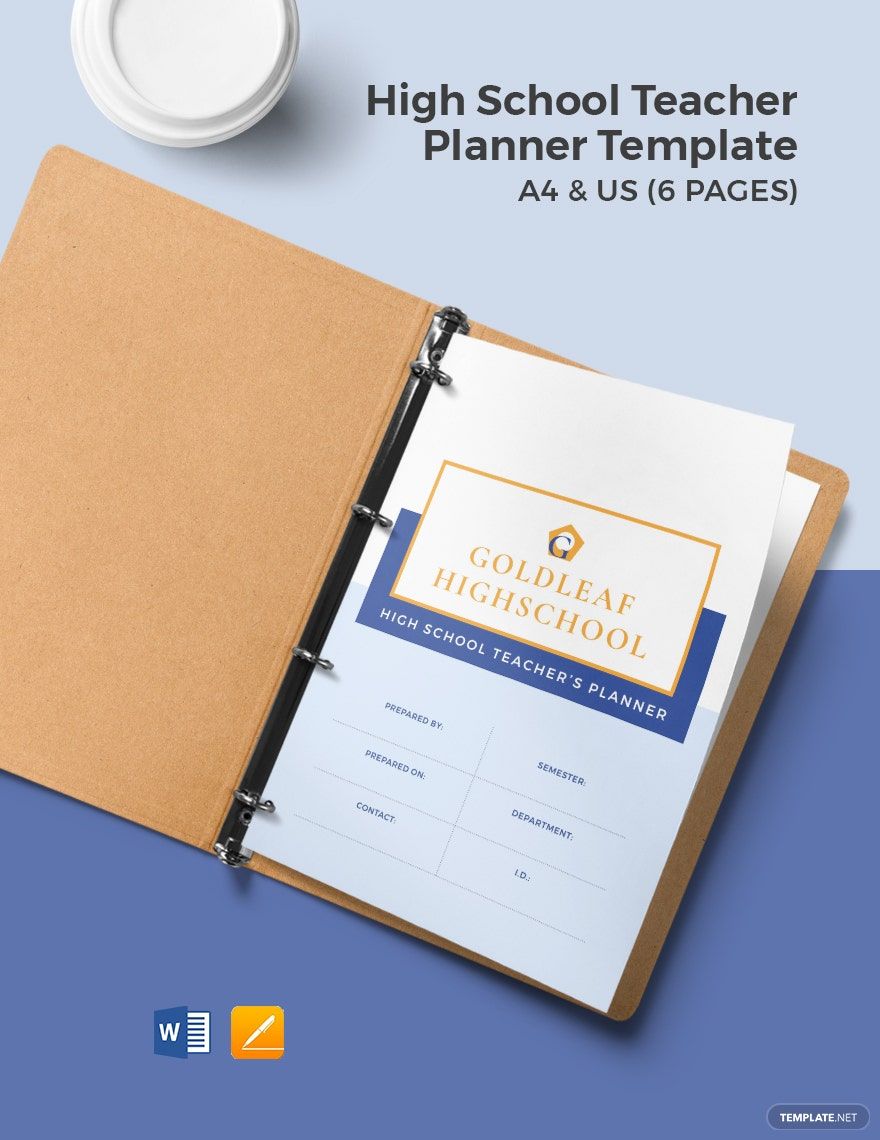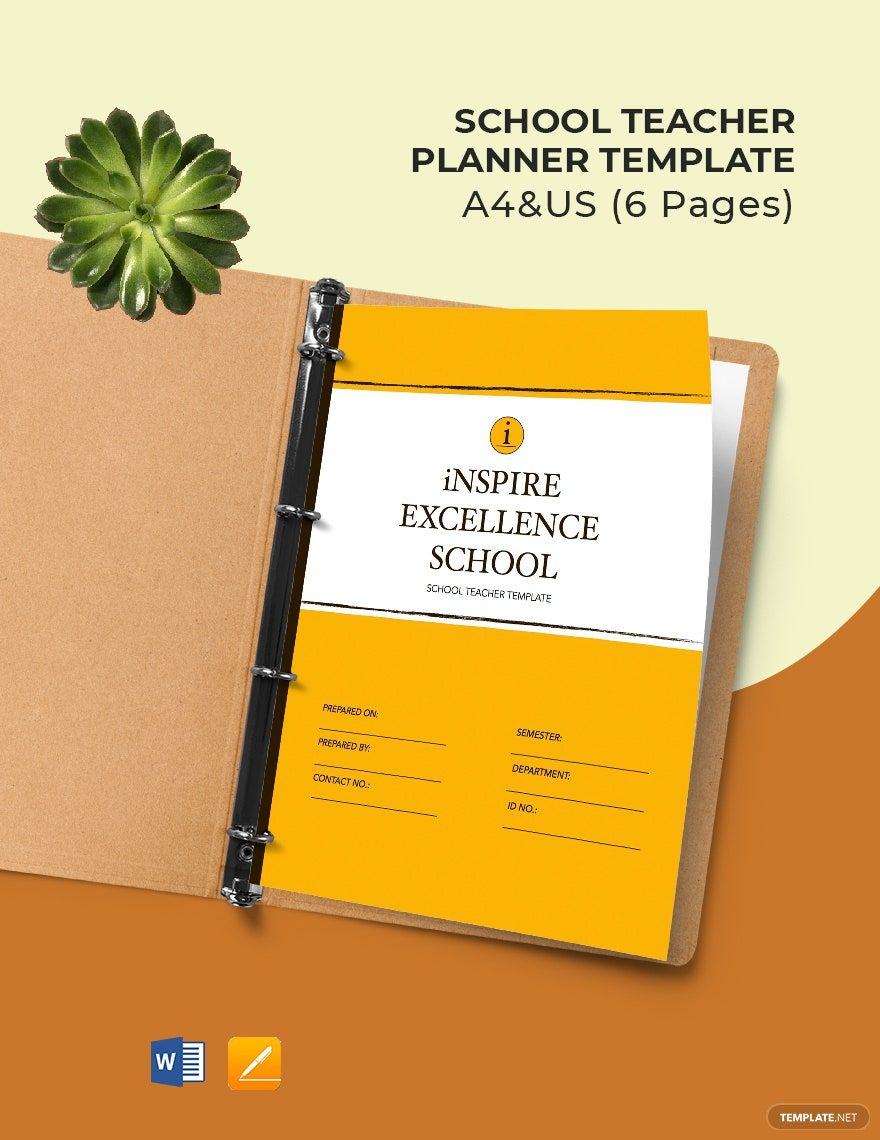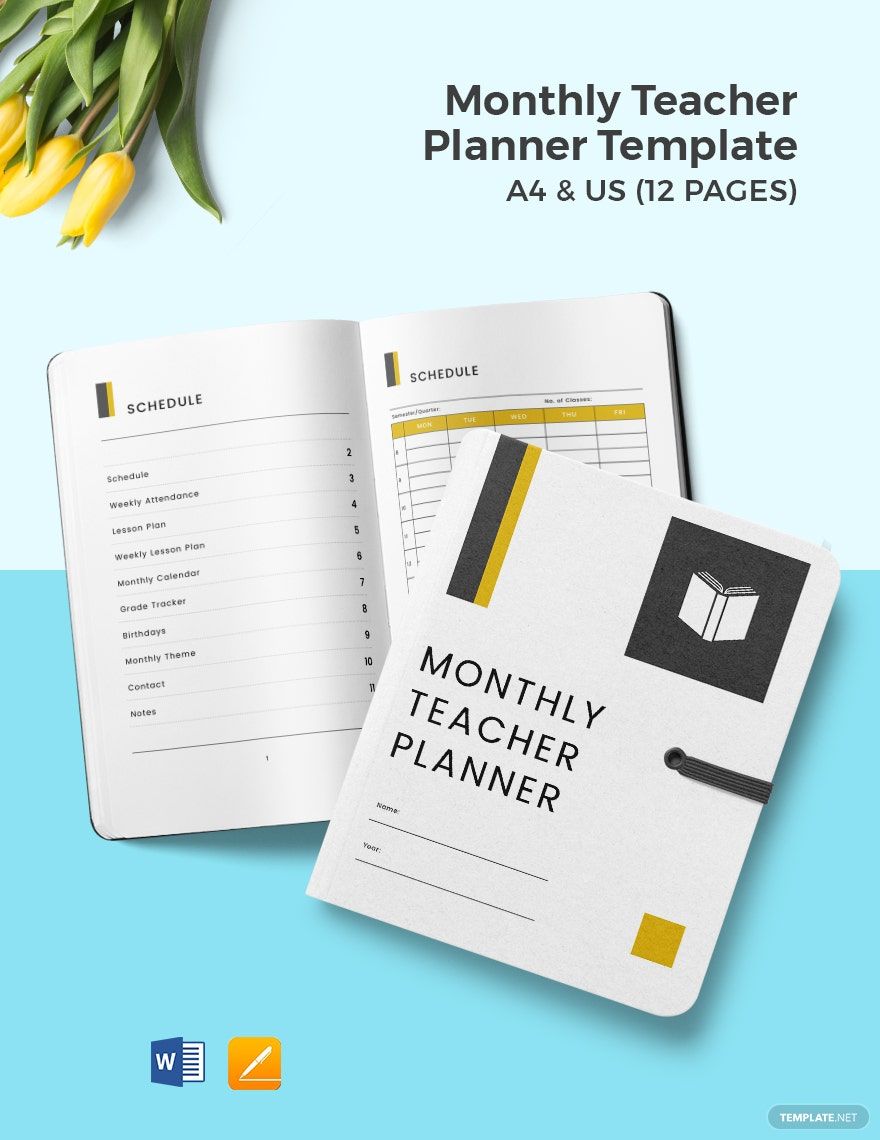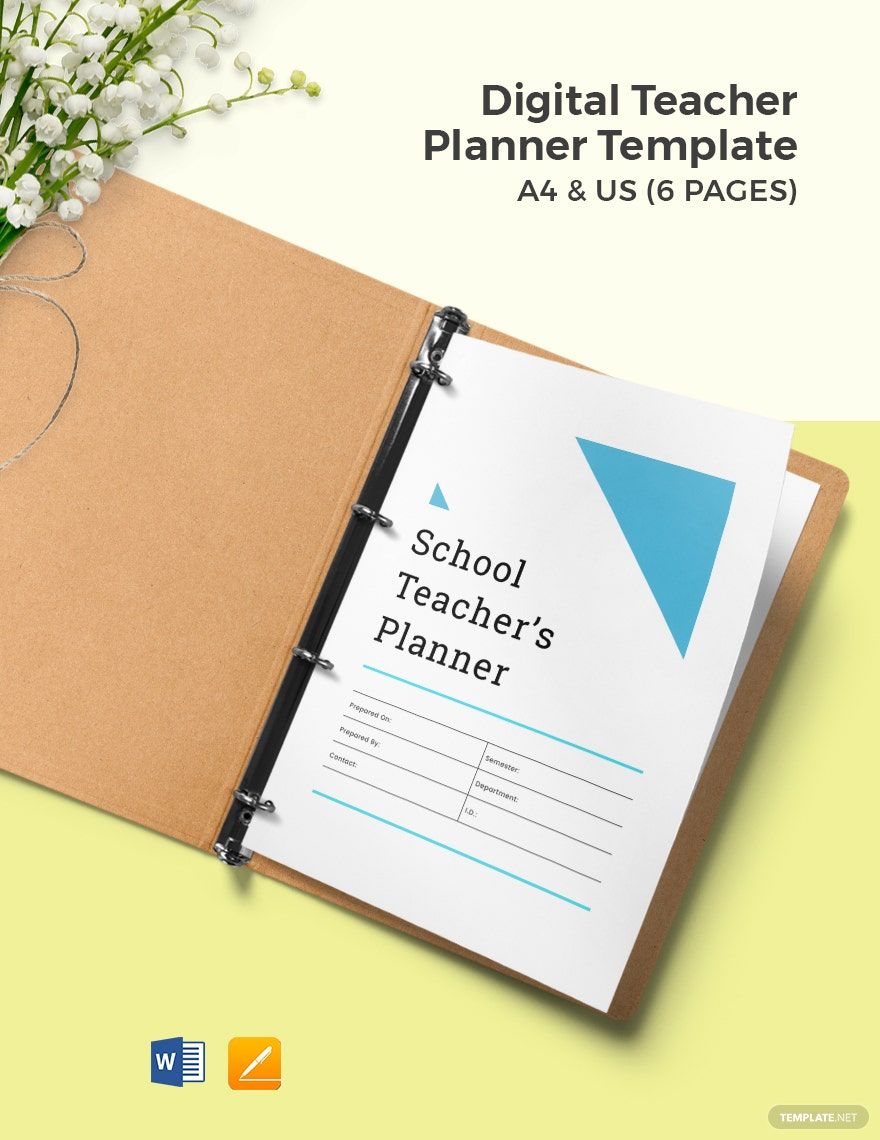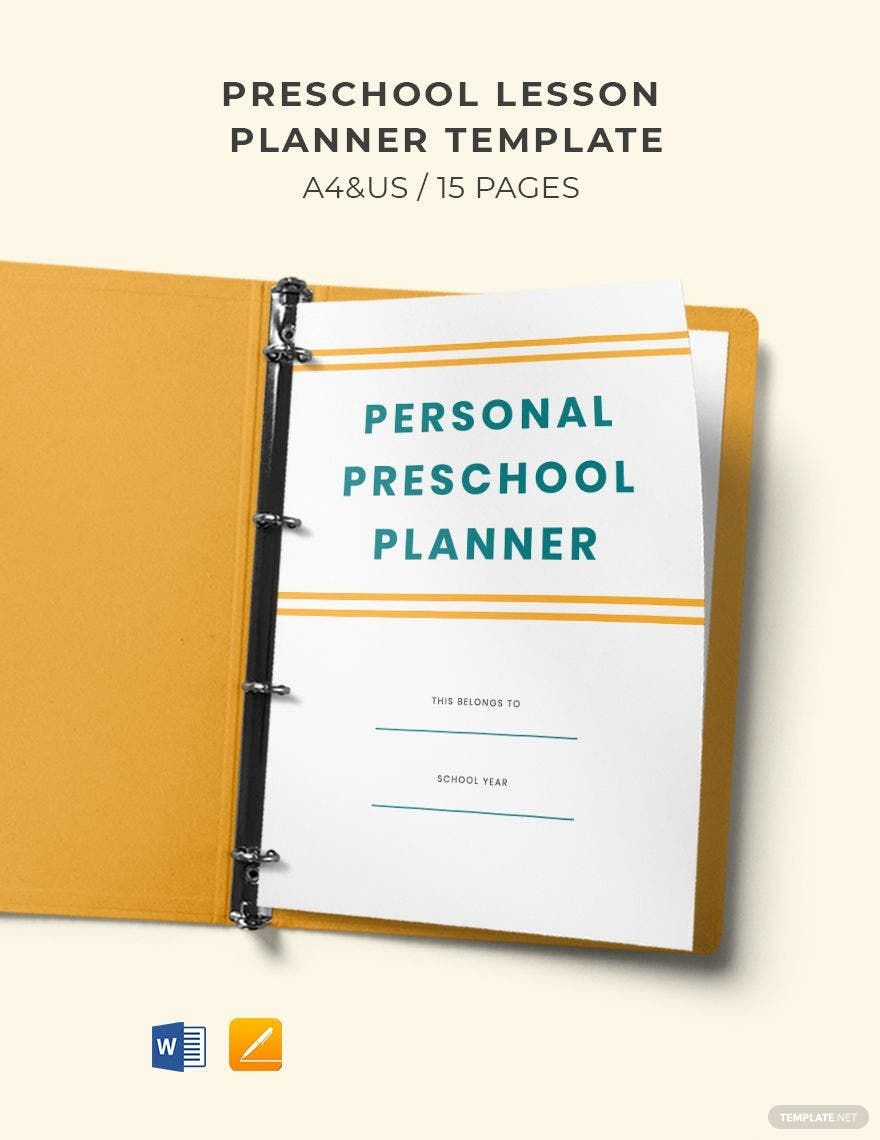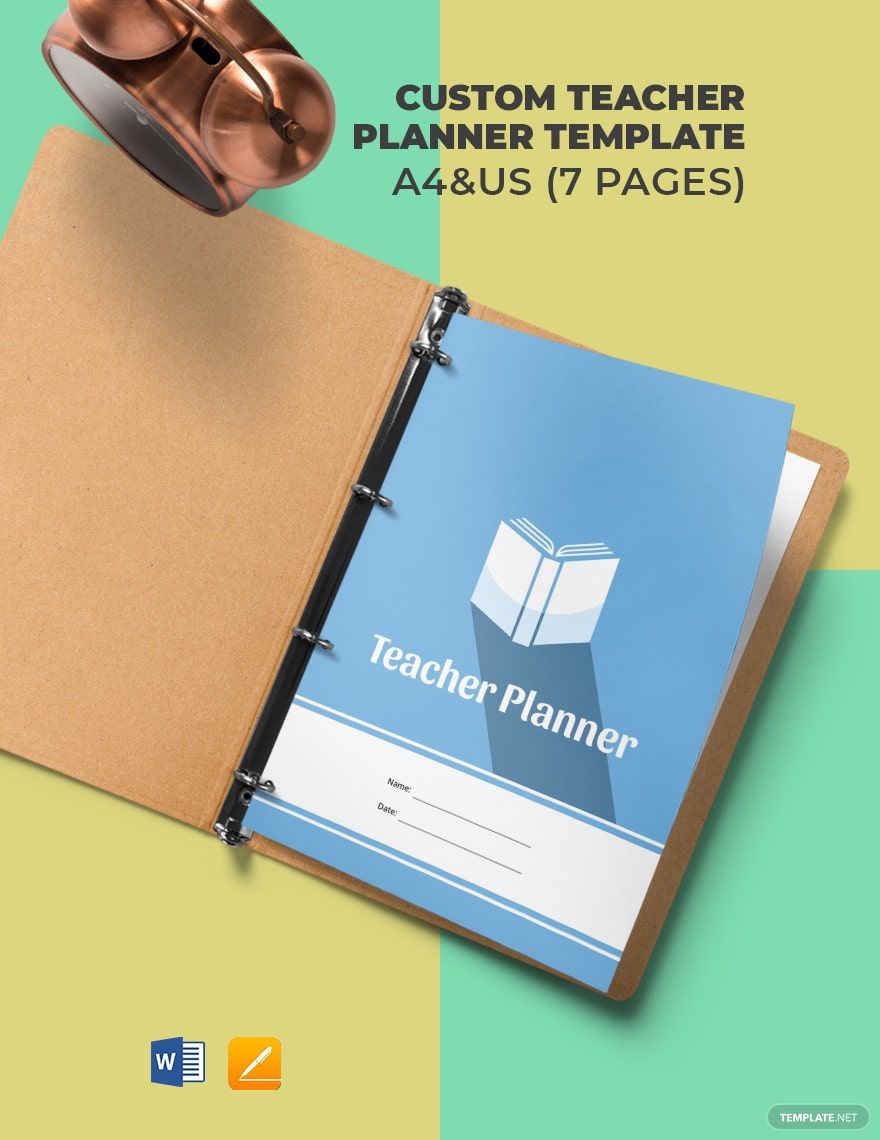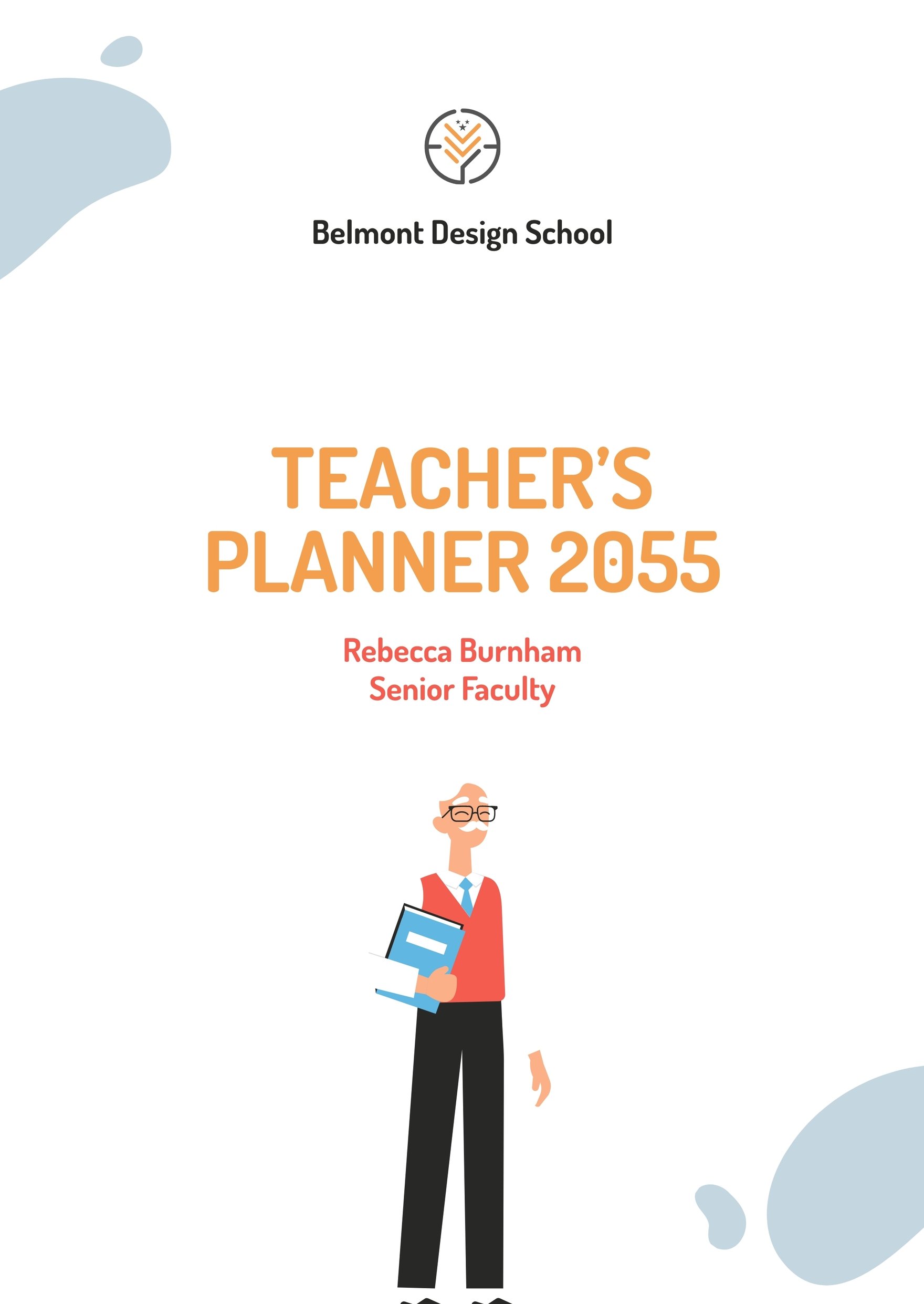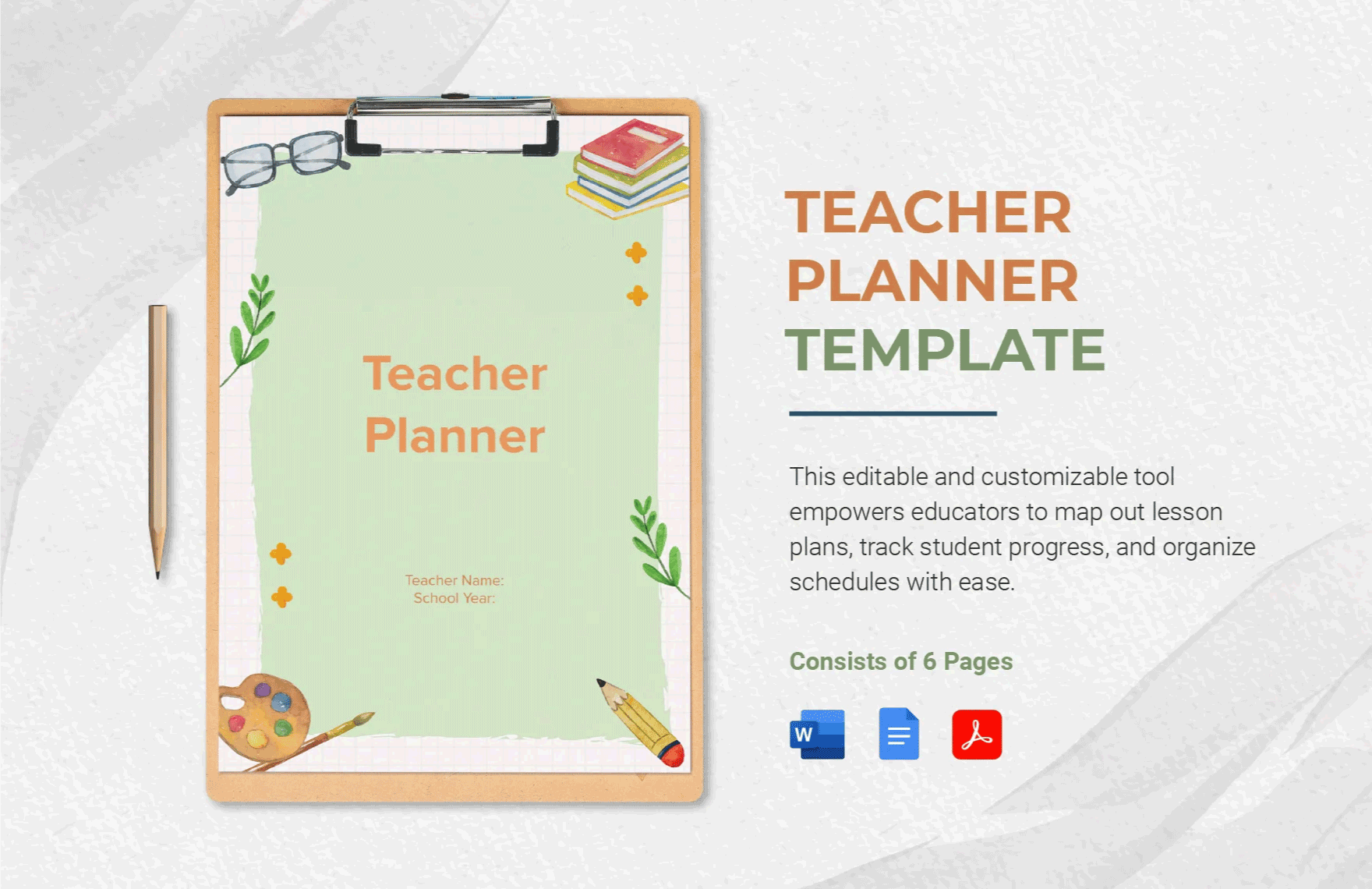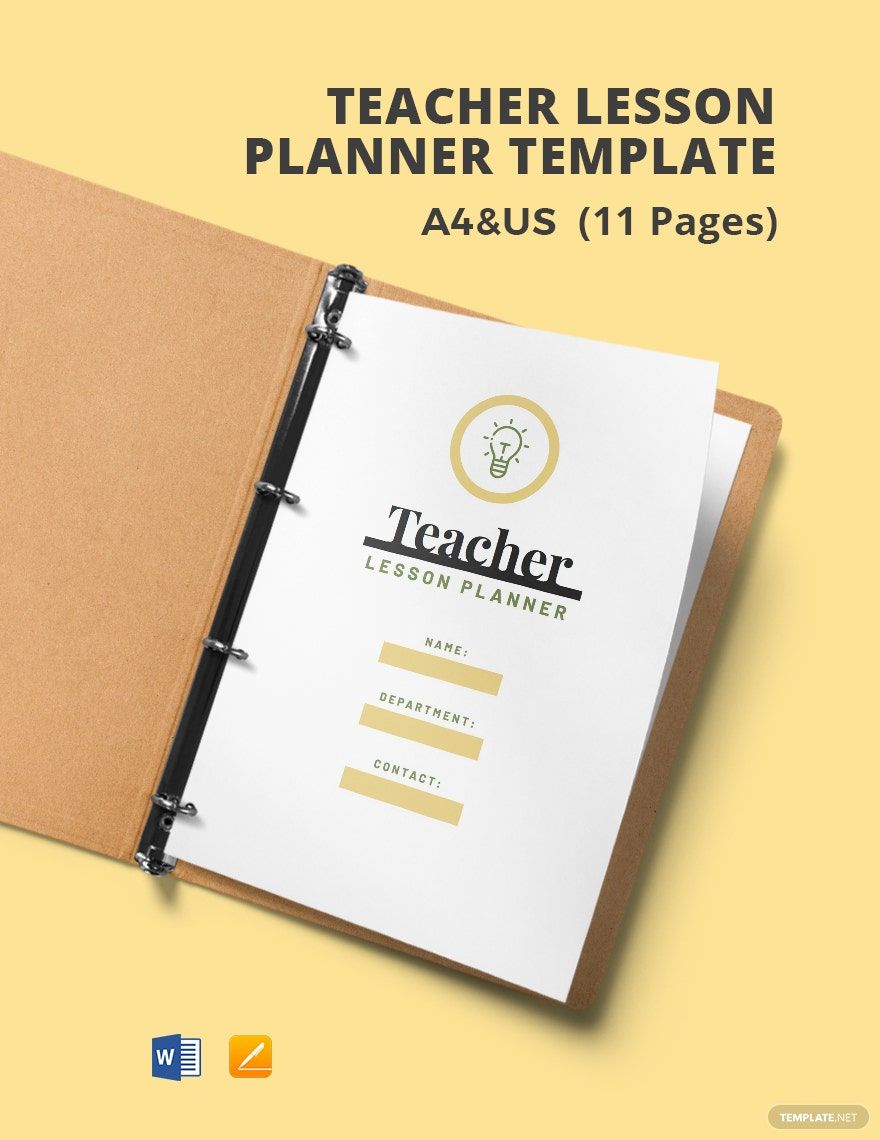Whether you are a preschool or a primary school teacher, keeping yourself organized and on track is important. Don't have a planner to keep all your school schedules, to-do lists, and teaching plans yet? Worry no more. We have a wide array of ready-made Teacher Planner Templates in MS Word and Apple Pages that will keep you organized and can help you maintain a standard teaching pattern. These high-quality templates are instantly editable, printable, and 100% customizable. Available in A4 and US Letter sizes. What are you waiting for? Start organizing all your school stuff today by using our ready-made Teacher Planner Templates.
Teacher Planner Templates in Word
Customize Your Classroom with Editable Teacher Planner Templates in Word. Download and Design Your Printable Plans. Streamline Teaching with Template.net. Get Started Today!
